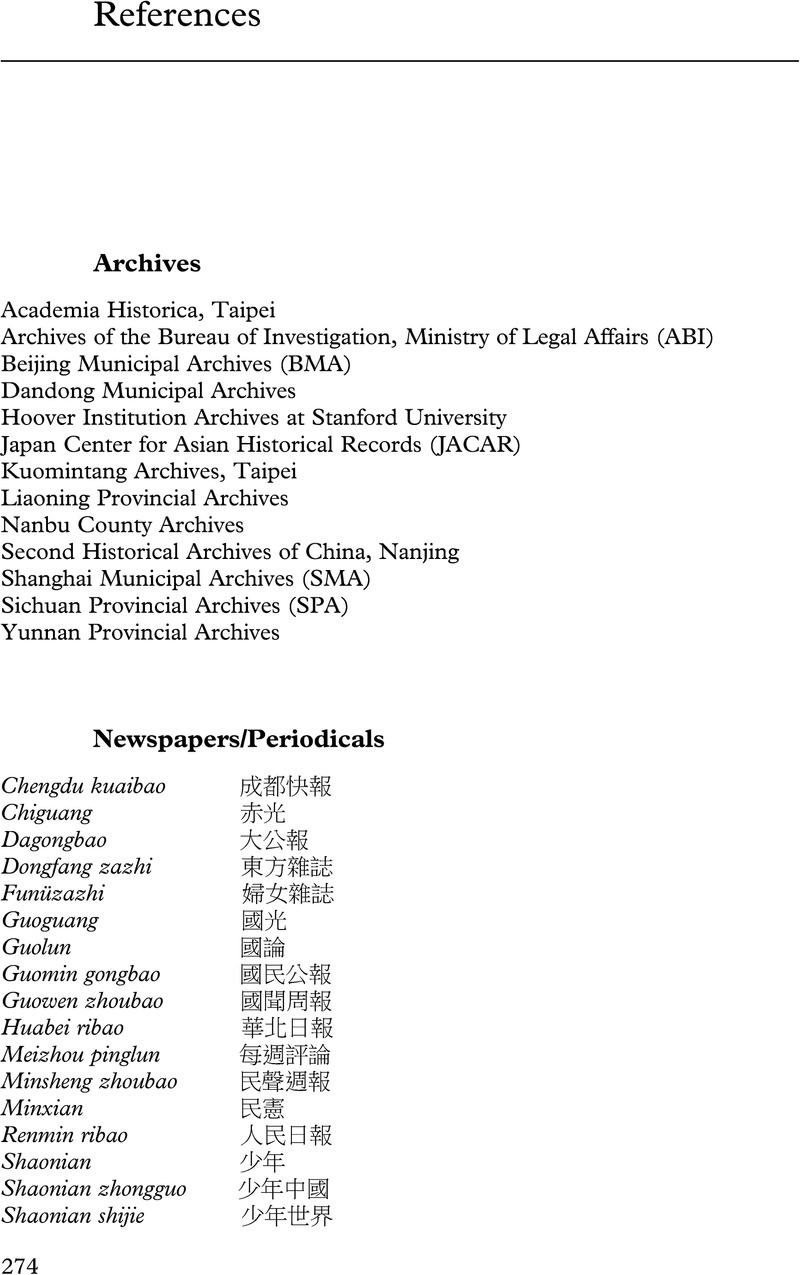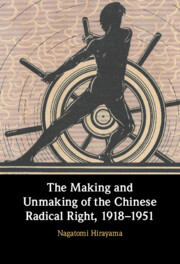Book contents
- The Making and Unmaking of the Chinese Radical Right, 1918–1951
- The Making and Unmaking of the Chinese Radical Right, 1918–1951
- Copyright page
- Contents
- Figures, Maps, and Tables
- Acknowledgments
- Note on the Text
- Chronology
- Abbreviations
- 1 Introduction
- 2 Origin of the Chinese Political Right in the May Fourth
- 3 “Young China” in Europe
- 4 Ideas and Politics in Warlords’ China
- 5 Pen and Gun
- 6 Going Local
- 7 Farewell to Revolution
- 8 Conclusion
- Appendix: Selected Romanized Terms
- References
- Index
- References
References
Published online by Cambridge University Press: 24 June 2022
- The Making and Unmaking of the Chinese Radical Right, 1918–1951
- The Making and Unmaking of the Chinese Radical Right, 1918–1951
- Copyright page
- Contents
- Figures, Maps, and Tables
- Acknowledgments
- Note on the Text
- Chronology
- Abbreviations
- 1 Introduction
- 2 Origin of the Chinese Political Right in the May Fourth
- 3 “Young China” in Europe
- 4 Ideas and Politics in Warlords’ China
- 5 Pen and Gun
- 6 Going Local
- 7 Farewell to Revolution
- 8 Conclusion
- Appendix: Selected Romanized Terms
- References
- Index
- References
Summary

- Type
- Chapter
- Information
- The Making and Unmaking of the Chinese Radical Right, 1918–1951 , pp. 274 - 286Publisher: Cambridge University PressPrint publication year: 2022

